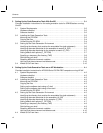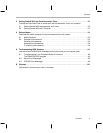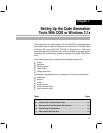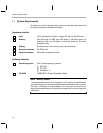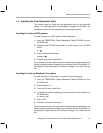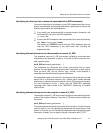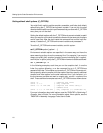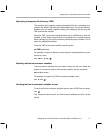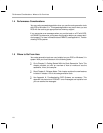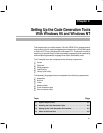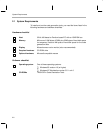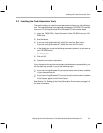
Setting Up the Code Generation Environment
1-6
Setting default shell options (C_OPTION)
You might find it useful to set the compiler, assembler, and linker shell default
options using the C_OPTION environment variable. If you do this, the shell
uses the default options and/or input filenames that you name with C_OPTION
every time you run the shell.
Setting the default options with the C_OPTION environment variable is useful
when you want to run the shell consecutive times with the same set of options
and/or input files. After the shell reads the command line and the input file-
names, it reads the C_OPTION environment variable and processes it.
To set the C_OPTION environment variable, use this syntax:
set C_OPTION=
option
1
[;
option
2
. . .]
Environment variable options are specified in the same way and have the
same meaning as they do on the command line. For example, if you want to
always run quietly (the –q option), enable C source interlisting (the –s option),
and link (the –z option), set up the C_OPTION environment variable as follows:
set C_OPTION=–qs –z
In the following examples, each time you run the compiler shell, it runs the
linker. Any options following –z on the command line or in C_OPTION are
passed to the linker. This enables you to use the C_OPTION environment vari-
able to specify default compiler and linker options and then specify additional
compiler and linker options on the shell command line. If you have set –z in
the environment variable and want to compile only, use the –c option of the
shell. These additional examples assume C_OPTION is set as shown above:
cl470 *c ; compiles and links
cl470 –c *.c ; only compiles
cl470 *.c –z lnk.cmd ; compiles and links using a
; command file
cl470 –c *.c –z lnk.cmd ; only compiles (–c overrides –z)
For more information about shell options, see the
TMS470R1x Optimizing C
Compiler User’s Guide
. For more information about linker options, see the
TMS470R1x Assembly Language Tools User’s Guide
.



